At our first drill site and beyond
After a long 8-day transit we arrived at our first drill site. We have traversed through a fierce storm that generated tropical-storm-force winds and 20-foot waves for about 2 days. The storm slowly moved to our south and east and the skies cleared and the winds calmed down. For the next week, we had improving days that became sunny with little to no wind. Just perfect to go out during our breaks and feast on the vistas of the sea and sky.
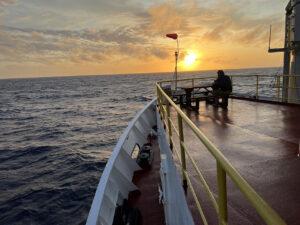
As we transited eastward toward our destination, one of the scientists mentioned that we would have to cross the Atlantic Ocean Mid-Ocean Ridge. So in the spirit of some of the early explorers who ventured to Antarctica to explore, a little celebration was created complete with super creative hats that had a small JR on top connected by a pipe connected to the crown that resembled the mid-ocean ridge, complete with lava flows!!! The chefs got into the spirit of things by baking us a huge lava cake. While it was a long transit, the enthusiasm all of us share for discovery and exploration and learning about our planet remained just as early explorers like Shackleton once did.
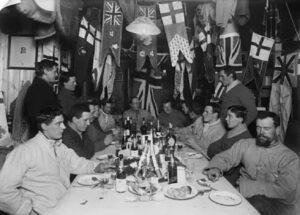
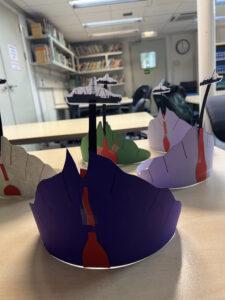
On Sunday we arrived at Site U1559, our first site to drill. This site was originally drilled by the previous South Atlantic Transect Project expedition, Expedition 390. However, a part of the drill assembly broke and it was decided to return early to repair it properly. So we have returned to complete the mission of this site. Site U1559 is the closest site to the mid-ocean ridge so the ocean crust and therefore the overlying sediments are the youngest that we will drill for any sites drilled for the SAT Project. Since the sediments were drilled from Expedition 390, we reentered the existing hole and began drilling directly into the hard ocean crust. Drilling was difficult and after about five days, it was decided to cease drilling and move to our next site. The hard rock oceanic crust that we did recover provided the petrologists with days and days of describing. I was amazed at how much detail they went into cataloging so many different parameters and aspects of the rock.
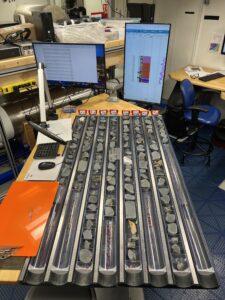
We are now heading for our next site, Site U1558. This site has the second oldest ocean crust and sediments of the SAT Project going back to about 45 million years ago. That is about two-thirds of the way back to the time of the dinosaurs. We have already seen sedimentary cores from this site that were drilled as part of one of the SAT expeditions that took place during the pandemic. On that expedition, only science techs and crew were on board to reduce the number of people on the ship. So the cores were taken but were not described, so we described and collected clues about how the climate changed millions of years ago.
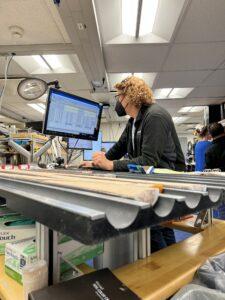
We are now back to redrill the site to ensure that we have a complete sedimentary section as even the best drilling techniques result in some sediments not being recovered. For developing past climate changes, it is essential that we construct complete climate records. I am looking forward to seeing the new core that comes out as I suspect that the year and a half that the core was in storage may have allowed the color of the core to change.
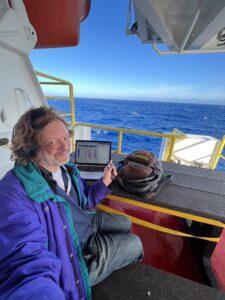
As I write this blog I am sitting on the picnic table facing the sea as we make our way toward the next site. There is music in my ears, the sound of the gentle waves crashing against the bow, with the deep dark blue colors of the ocean that touches my soul in profound ways while it stretches out to the horizon where it meets the blue sky. The sky is dotted with low-hanging puffy cumulus clouds that move past us as they head east toward Africa while we sail westward in the direction of Uruguay. The soothing smell of the sea makes my soul smile as I take in the magic of allowing myself to become completely enveloped by these moments while at sea. I have been witnessing sunsets on the sea, where heaven and ocean meet, complete with the spectacular colors of a setting sun that slowly descends below the waves against the western heavens. Moments like this open the gates of paradise for one’s soul.